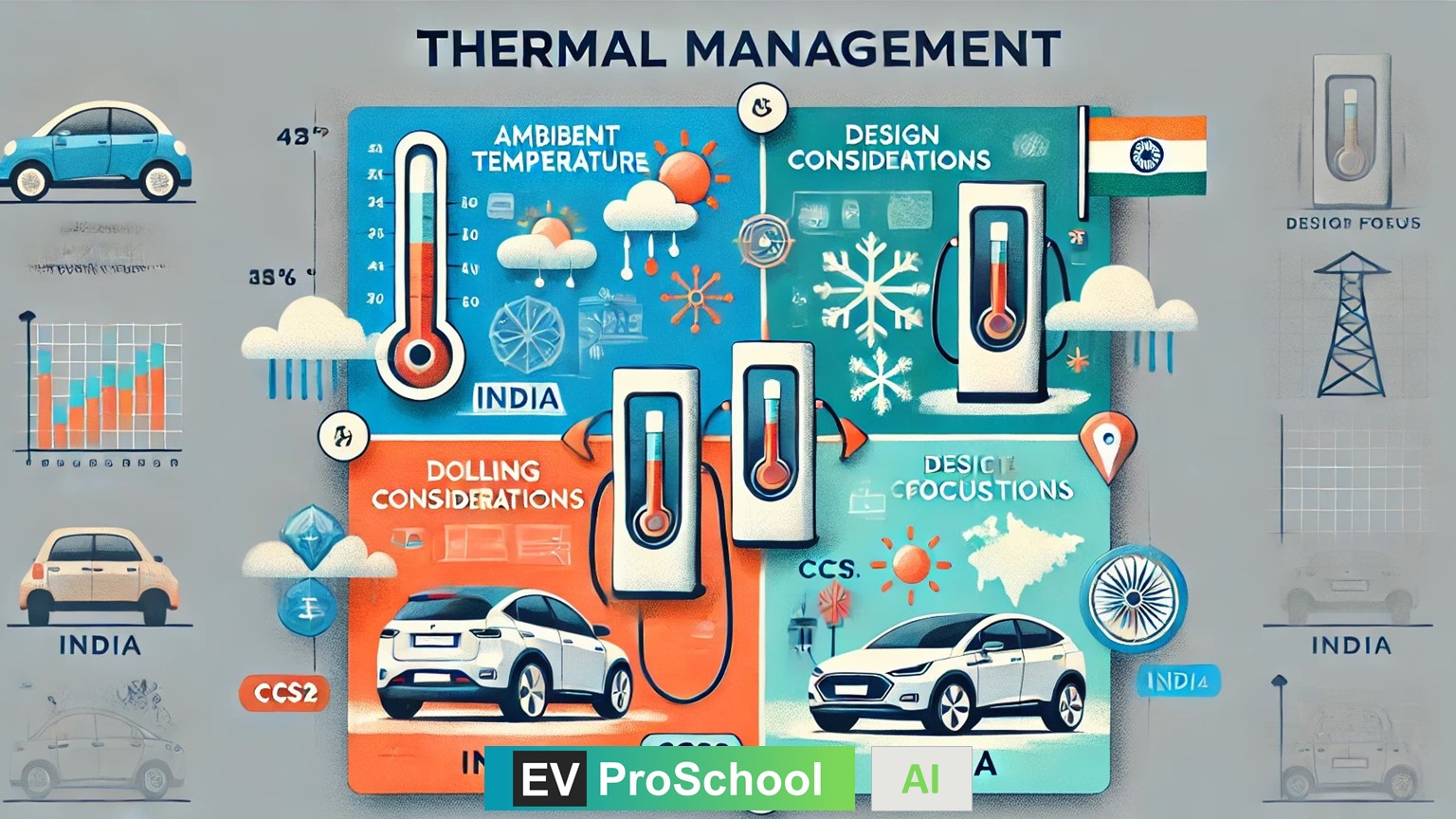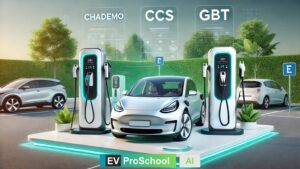Electric vehicle (EV) chargers like CHAdeMO, CCS, CCS2, and GBT are designed to transfer high amounts of power to a battery in a short time. However, this rapid power transfer generates heat, making thermal management a critical component of their design. Efficient thermal management ensures the safety, performance, and longevity of both the charger and the EV battery.
Why Thermal Management Matters in EV Chargers
During charging, high currents pass through the charger and cables, causing heat buildup. If this heat isn’t managed effectively, it can lead to:
- Overheating: Potentially damaging sensitive components.
- Reduced Efficiency: Heat causes energy loss during transmission.
- Safety Risks: Overheating can trigger malfunctions or fire hazards.
- Decreased Battery Health: Extreme heat impacts the EV battery’s lifespan and performance.
How Thermal Management Works in EV Chargers
Thermal management in EV chargers uses a combination of techniques to regulate temperature. Here’s how it works:
- Cooling Mechanisms:
- Air Cooling: Fans circulate air to dissipate heat from the charger components. Common in slower AC chargers or chargers in cooler climates.
- Liquid Cooling: High-performance DC fast chargers (e.g., CCS and CCS2) use liquid coolant to absorb and transfer heat away from critical areas like power electronics and cables.
- Temperature Sensors:
- Real-time sensors monitor the charger’s temperature. If temperatures exceed safe limits, the charger adjusts power output or shuts down.
- Heat Dissipation Design:
- Chargers are designed with heat sinks, ventilation slots, and materials that dissipate heat efficiently.
- Dynamic Power Adjustment:
- The charger dynamically reduces power output to avoid overheating in high-temperature conditions or during prolonged charging sessions.
Comparing Thermal Management Across CHAdeMO, CCS/CCS2, and GBT
| Standard | Thermal Management Focus | Unique Challenges |
|---|---|---|
| CHAdeMO | Air cooling with limited liquid cooling support. | Primarily designed for moderate climates. |
| CCS/CCS2 | Advanced liquid cooling for high-power charging. | Handles extreme fast-charging up to 350 kW. |
| GBT | Air cooling for standard chargers; newer models integrate liquid cooling. | Tailored for China’s urban and rural environments. |
- CCS/CCS2: These chargers, particularly those with ultra-fast speeds (150-350 kW), rely on advanced liquid cooling due to the immense heat generated during high-power charging.
- CHAdeMO: Being an older standard, CHAdeMO chargers were initially optimized for moderate climates and lower charging speeds, so air cooling was sufficient.
- GBT: In China, GBT chargers are evolving to include liquid cooling for fast-charging stations, but air cooling remains dominant for standard applications.
The Role of Ambient Temperature in Charger Design
Ambient temperature significantly impacts the design and performance of EV chargers. In hot climates, thermal management systems need to work harder, while in cold regions, the focus may shift to preheating components.
Key Considerations by Region:
- Hot Climates (e.g., India, Middle East):
- Higher risk of overheating due to ambient temperatures.
- Requires advanced liquid cooling, robust ventilation, and heat-resistant materials.
- Sun exposure is a critical factor; shading and UV-resistant materials are essential.
- Cold Climates (e.g., Scandinavia, Canada):
- Chargers may require built-in heating systems to maintain optimal performance.
- Cold temperatures can slow power transfer and increase energy loss.
- Moderate Climates (e.g., Europe, Japan):
- Balanced systems with air or liquid cooling depending on power levels.
Design Considerations for Thermal Management in India
India’s diverse climate poses unique challenges for EV charger thermal management:
- High Ambient Temperatures:
- Indian summers, especially in regions like Rajasthan and Gujarat, often exceed 40°C. Chargers must use liquid cooling to handle this heat without compromising efficiency.
- Ventilation systems need to prevent dust and debris from entering, especially in areas with high air pollution.
- High Humidity:
- Coastal regions like Mumbai and Chennai experience high humidity, which can affect cooling efficiency. Anti-corrosion coatings and sealed systems are necessary to protect components.
- Urban Heat Islands:
- In cities like Delhi and Bengaluru, the combination of concrete infrastructure and traffic heat amplifies temperatures. Chargers must be tested for higher ambient heat tolerance.
- Dust and Pollution:
- Dust accumulation in arid regions or cities with high pollution can clog ventilation systems. Maintenance-friendly designs with filters are critical.
- Seasonal Variations:
- Chargers must perform reliably in both summer and monsoon conditions. Waterproofing is essential to prevent water ingress during heavy rains.
What EV Charger Manufacturers Should Focus On in India
- Liquid Cooling Systems:
- Essential for high-speed chargers in hot climates. These systems need to be robust and easy to maintain.
- Weatherproof Design:
- Chargers must be resistant to dust, rain, and UV exposure.
- Shading and Placement:
- Install chargers under canopies or shaded areas to reduce direct heat exposure.
- Localized Testing:
- Chargers should be rigorously tested under India-specific climate conditions to ensure durability and performance.
- Smart Energy Management:
- Incorporate dynamic power adjustment to reduce strain during peak heat or energy demand periods.
Conclusion
Thermal management is a critical aspect of EV charger design, ensuring safe and efficient operation across diverse climates. While CHAdeMO, CCS, CCS2, and GBT chargers use similar core principles, their thermal management strategies vary depending on power levels, regional conditions, and technological advancements. For India, a combination of liquid cooling, weatherproof designs, and region-specific testing is essential to address the country’s unique challenges. As India’s EV ecosystem grows, robust thermal management will play a key role in ensuring reliable charging infrastructure.



